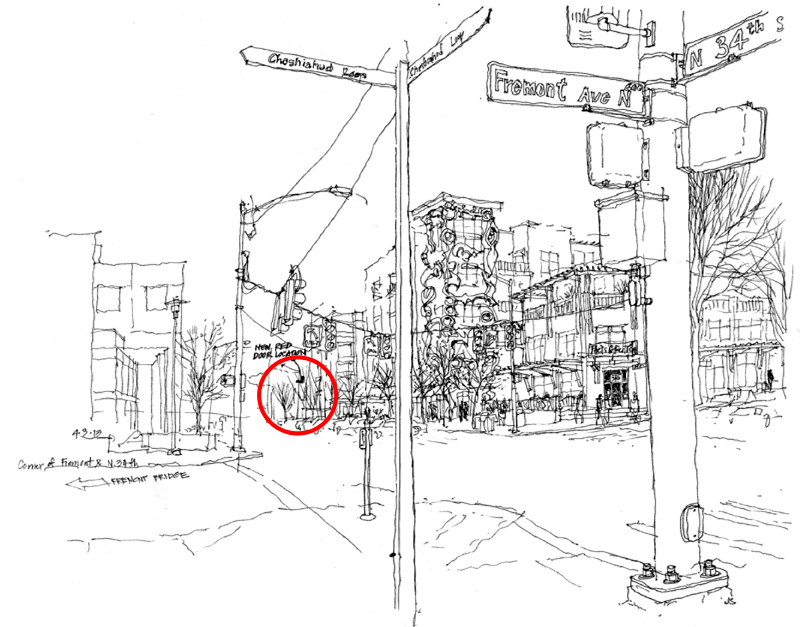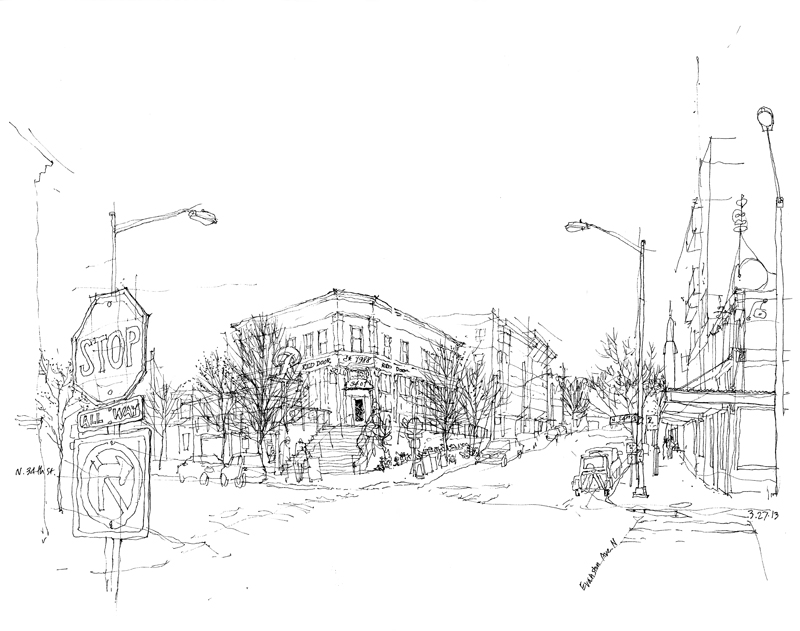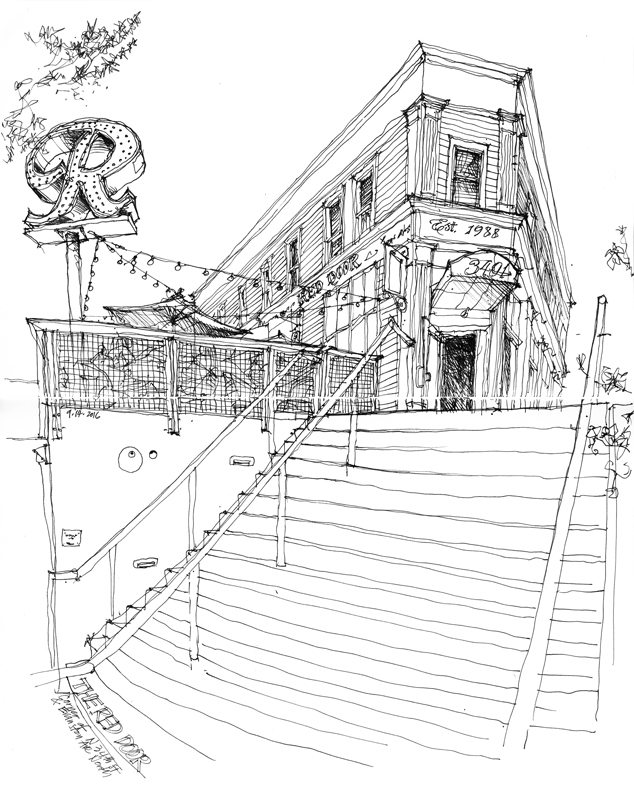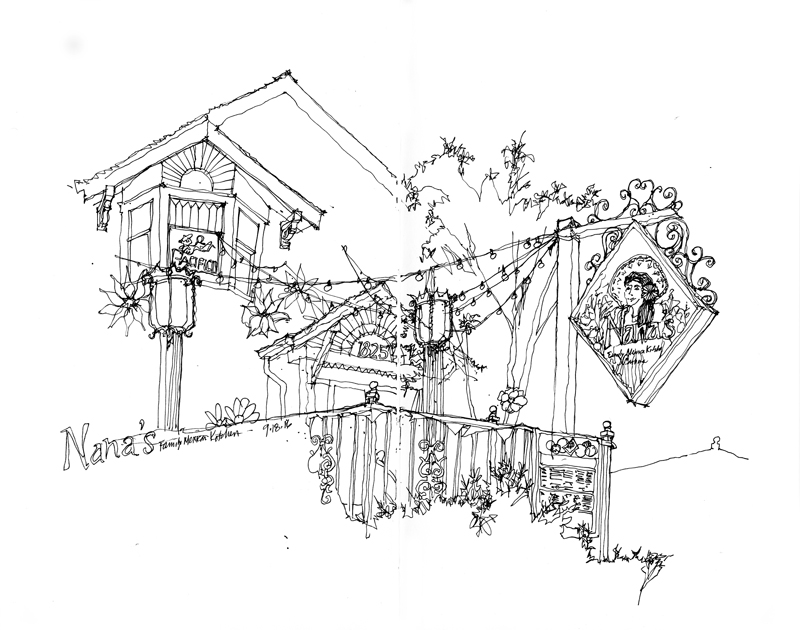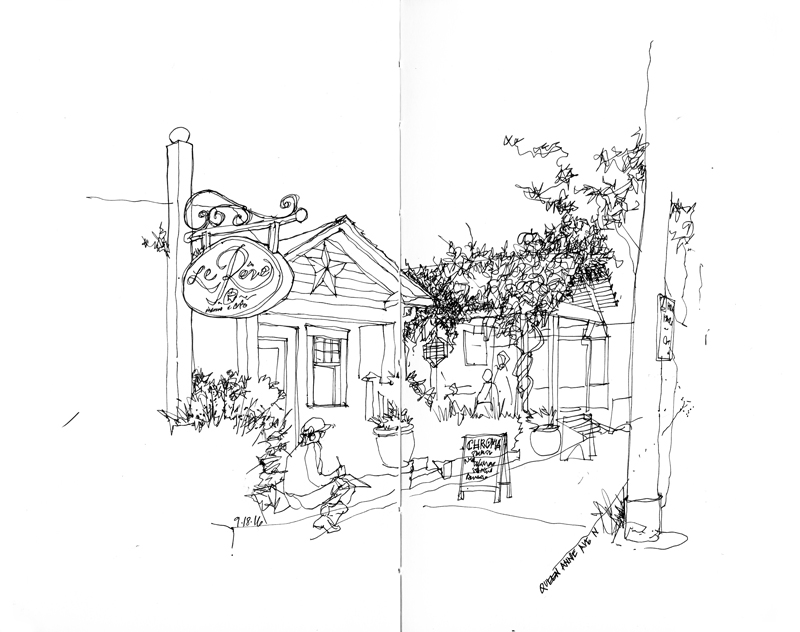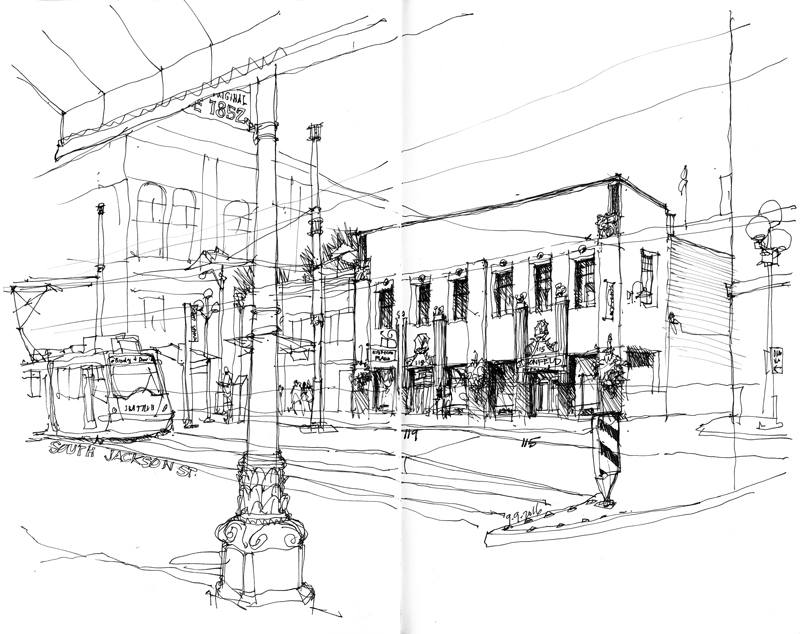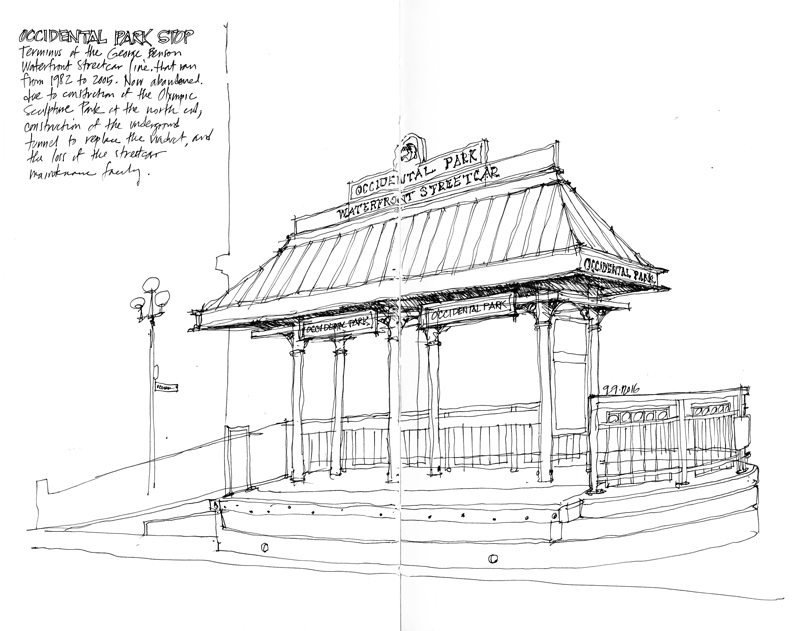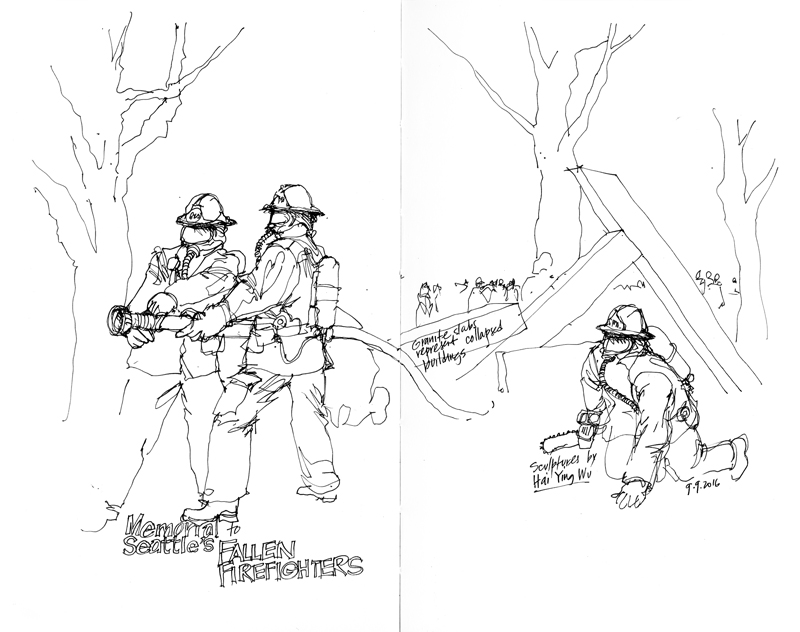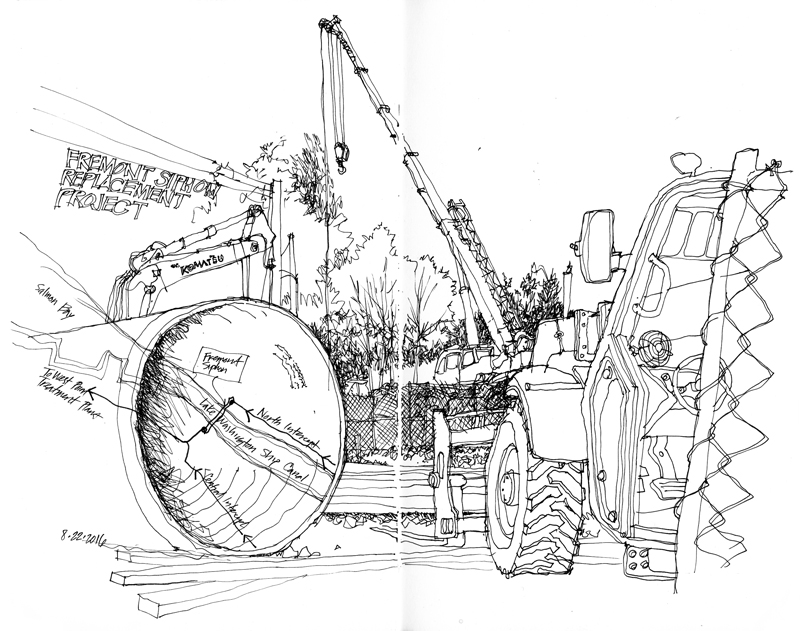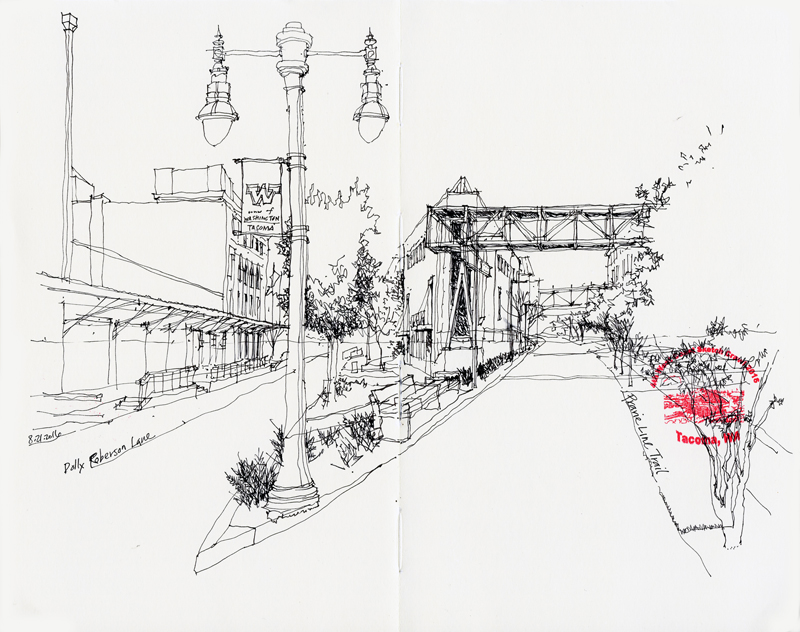Having selected a subject, we can view it from different vantage points. To illustrate, here are three views of The Red Door Ale House in Fremont. The first focuses on the intersection of Fremont Avenue North and North 34th Street but the circle indicates the location of the Red Door a block to the west. The second is a contextual view from across the street that shows how the original structure sits atop a concrete parking garage after being moved in 2001 to make way for a new development a block away. The third is much closer, from the bottom of the concrete stairs that lead up to the front entrance. So having selected a subject for a drawing, we still have options for framing and contextualizing a view.
Monthly Archives: September 2016
Upper Queen Anne Hill
On what turned out to be a beautiful Sunday morning after a few cloudy, showery days, the Seattle Urban Sketchers group met in the upper Queen Anne neighborhood just north of downtown. As I was viewing the subject of my first sketch, Nana’s Mexican Family Restaurant, I realized that the scene presented a multitude of details that would overwhelm the eye. I therefore chose to draw very selectively, leaving a lot of white space for the imagination to fill. This approach required the selection of a dominant element—in this case, the sign above the sidewalk—and then proceeding so that the drawing would lead the eye from one area of interest to the next. The key is never to lead the eye off the page.
I used a similar approach for the remaining two drawings I was able to do during the morning session.
Pioneer Square Scenes
The first drawing is of an elegant art deco facade added in 1929 to unify and conceal two separate buildings that were built around 1900. The original drawings in the City of Seattle Department of Planning and Development are unsigned but the client was Rautman Plumbing and Heating Company.
In contrast to the contextual view above, this drawing is simply of a trolley stop at the Occidental Park terminus of the now defunct George Benson Waterfront Streetcar line that operated from 1982 to 2005. The popular tourist attraction used five 1924-era streetcars imported from Melbourne, Australia.
The third sketch is of the memorial to Seattle’s fallen firefighters in Occidental Park. While the artist Hai Ying Wu was inspired by the four firefighters that died while fighting a warehouse fire in Seattle’s Chinatown International District on January 5th, 1995, the sculptures are a tribute to all of the firefighters that have fallen in the line of duty since the department began in 1889. Surrounding the figures are slabs of granite intended to depict a collapsed building.
Fremont Siphon Replacement Project
Just south of where NW 36th Street bends and turns into Leary Way NW there is a large construction site. It is difficult to see what is going on there because most of the activity is occurring underground but we do know that two new 500-foot long microtunnels have recently been installed to replace the existing siphon that runs under the Ship Canal between the Fremont and Queen Anne neighborhoods.
The existing siphon is almost 100 years old and at the end of its service life. It’s amazing to realize that the two large cast iron pipes that make up the siphon can carry up to 220 million gallons of sewage and stormwater per day from a 100-square-mile service area covering a large portion of north Seattle and even parts of north King and Snohomish counties. From the Queen Anne side of the siphon, a single large pipe delivers the charge to the West Point Treatment Plant in Discovery Park.
The remaining work now consists of connecting the existing sewer line to the new siphons via a 9-foot diameter pipe and the construction of an odor-control facility.
Still More Tacoma Sketches
To conclude my posting of sketches that I did during the 4th Annual West Coast Urban Sketchers Sketch Crawl in Tacoma, here are a couple more from Sunday morning’s session. The temperature drop from the heat of the previous two days was invigorating. What attracted me to these two views was the way the paths bifurcated (split into two branches or forks). The first is where Prairie Line Trail splits off from Pacific Avenue in front of the Tacoma Art Museum. The second is further up along the Prairie Line Trail on the UW Tacoma campus where it merges with Dolly Roberson Lane.

